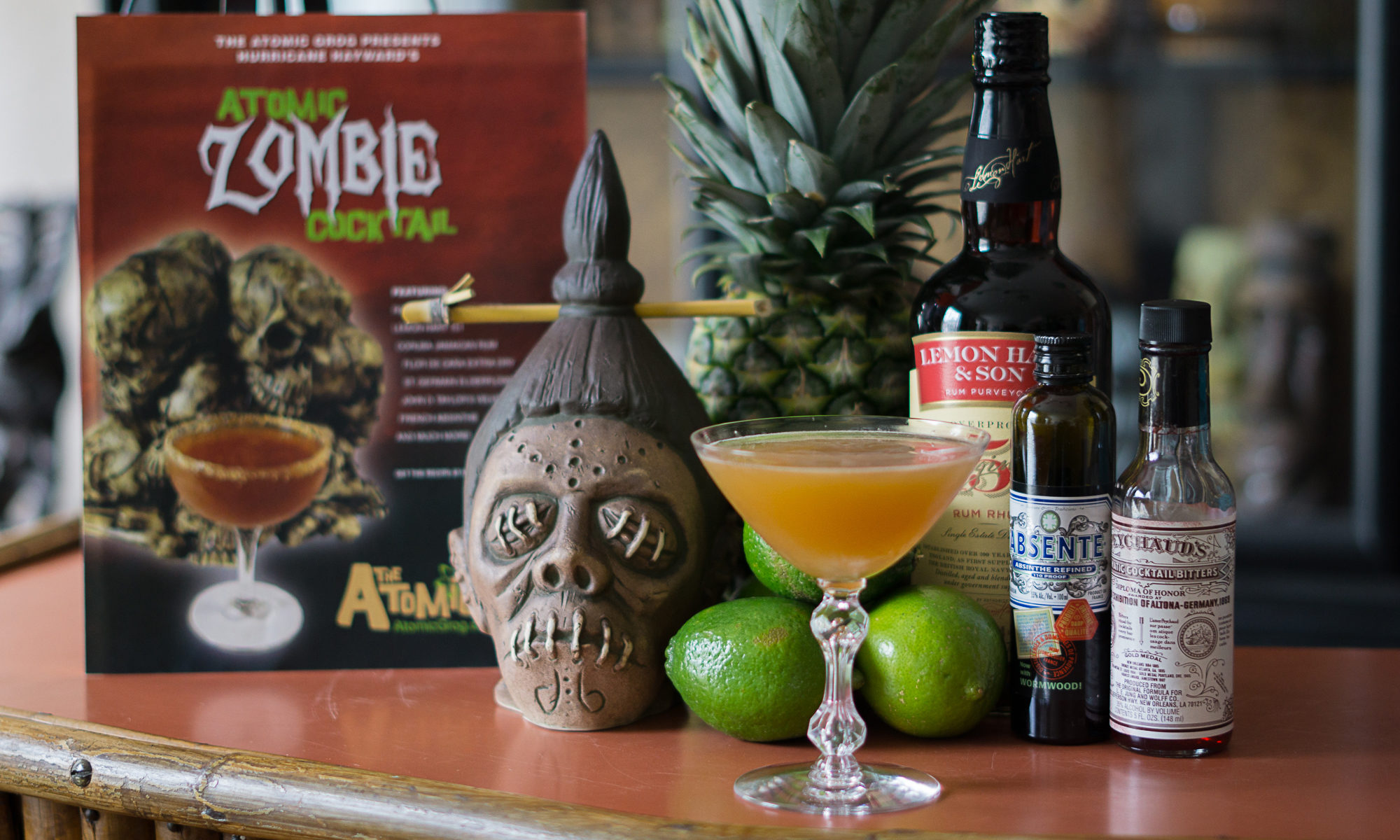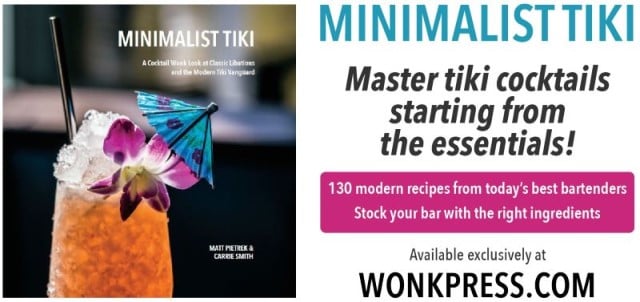Until cocktail author and historian Jeff “Beachbum” Berry unearthed the mystery behind Don the Beachcomber’s classic Zombie cocktail, the true recipe lay buried for more than 70 years. Berry’s discovery and publication of his findings in the groundbreaking Sippin’ Safari (2007) spurred a revival and greater appreciation of the deadly drink that continues to this day.

Simultaneously and coincidentally, the world of cinema also went zombie crazy, ushering in a renaissance of the modern horror archetype. Of the 30 films on a recently published list of “The best zombie movies of all time,” half were released in the 21st century.
With the precision of a pathologist, Berry dissected and definitively revealed the template that the bootlegger turned Tiki cocktail pioneer used to create what was arguably the most popular drink of the post-Prohibition era. The original 1934 recipe is a groundbreaking masterpiece, combining multiple rums and spices with sweet and sour juices and syrups, bitters, and even a touch of anise. Stay tuned for the upcoming book (Searching for Don the Beachcomber) and film (The Donn of Tiki) for the full story of his life and times.
But what inspired the name of the cocktail? We can only assume it was White Zombie, released just a year or two before the drink and considered to be the first zombie film. Starring monster movie legend Béla Lugosi, it’s a far cry from today’s gore fests featuring flesh-eating corpses. The movie is actually fairly faithful to the true folklore, spinning the tale of a Haitian voodoo priest who drugs his victims and turns them into zombie slaves.

In the ensuring years, that origin story has been widely ignored by pop culture. The movie genre traces its modern roots to director George Romero and his 1968 cult classic Night of the Living Dead. Nearly every movie or TV series since has loosely followed Romero’s template of reanimated corpses mindlessly running amok for no apparent reason, with political and social statements thrown in for good measure.
Back in the 1930s, Ernest Raymond Beaumont Gantt (who later legally changed his name to Donn Beach) simply borrowed the name and made no attempt at connecting it to its island of origin. But what if we go back to the roots of the true zombie legend and use it as inspiration for not one, but two new Zombie cocktails?
SEE BELOW: New original cocktails
>>> LE ZOMBI
>>> VODOU ZONBI (Haitian Zombie)
But first, here’s a quick history lesson on the mythology and cultural significance of what has become known as the zombie.
BACKGROUND: Haitian zombie folklore rooted in slavery, French colonialism
The true story behind zombie folklore is scarier and more tragic than a movie.

Like its sister islands, what is now Haiti was invaded and colonized by a European power. France established Saint-Domingue in 1664, growing it into the richest sugar colony in the Caribbean on the backs of African slaves.
The brutal practice came to a violent end in 1791, when slaves staged a mass revolt and rose up against their oppressors. By 1794, the French government abolished slavery throughout its empire, more than 70 years before the 13th Amendment ended the practice in the United States.
The revolt sparked the Haitian Revolution, which ended in 1804 with the island’s independence and heroic ex-slave Toussaint Louverture installed as Haiti’s first governor general. It was a defining moment in the history of the Atlantic World, distinctive as the only slave uprising that led to the founding of a state that was both free from slavery and ruled by non-whites and former captives.
The legend of the zombie, or “zonbi” as it was known in Haitian Creole culture, could be considered a metaphor for the horrors of slavery.

The word itself and the concept of zombie-like creatures can be traced back to African origins. Some research has also found a connection to the island’s indigenous Taíno people, known for their shamanist practices. The African slaves brought with them traditions and from their homeland, including the “Vodou” religion.
Haitian Vodou developed between the 16th and 19th centuries, merging traditional religions of west and central Africa with Roman Catholicism. In Haitian culture, a zonbi is a dead body brought back to life by a Vodou sorcerer known as a “bokor.” According to legend, the zonbi is under the total control of the bokor as a personal slave and lacks any will of its own. It’s part of a complex, spiritual belief (“soul dualism”) that a person has two or more kinds of souls.
One soul (“body soul”) is associated with body functions while the other (“free soul” or “wandering soul”) can leave the body. In the belief system of the enslaved Africans brought to Haiti, the afterlife included a return to their homeland, where both souls were reunited. However, if they had offended their voodoo deity, they would remain a zonbi and be a slave for eternity.
The fear of “zombification” was used by slave drivers to discourage slaves from committing suicide. These men who directed the daily work were often slaves themselves and sometimes also practicing voodoo priests, according to scholars. After the revolution, the zonbi became part of Haitian folklore, a stirring reminder of the past in the hope that it never happens again.
The earliest references to zombies in the United States, cited throughout the 1800s, were also closely associated with slavery and connected to African traditions. But the phenomenon went mainstream during the United States’ military occupation of Haiti (1915–1934).
Travel writer William Seabrook’s book, The Magic Island (1929), revealed “voodoo cults” in Haiti and likely inspired the 1932 film White Zombie. Though it takes place in Haiti, the film twists the legend to appeal to its American audience. I Walked With A Zombie, a 1943 horror movie set in a fictional Caribbean island, further strays from the original legend. By 1968 and Romero’s Night of the Living Dead, the horror film was cloaked in social commentary and civil rights, leaving Haiti’s zonbi myth to the history books.
The Haitian zombie made a brief comeback in 1985, when anthropologist Wade Davis published his controversial findings in the book The Serpent and the Rainbow, which recounted his experiences investigating Vodou cults in Haiti. It was criticized for scientific inaccuracies in regards to its theories about psychoactive drugs, but it was a commercial success and inspired the 1988 horror film of the same name (starring Bill Pullman).
But just when you thought the legend was dead and buried, a more socially aware mindset has sparked new interest.














